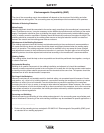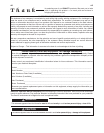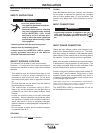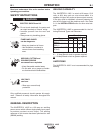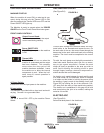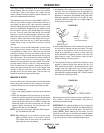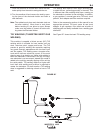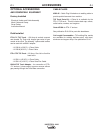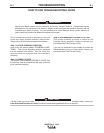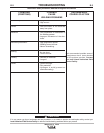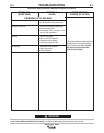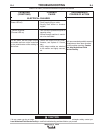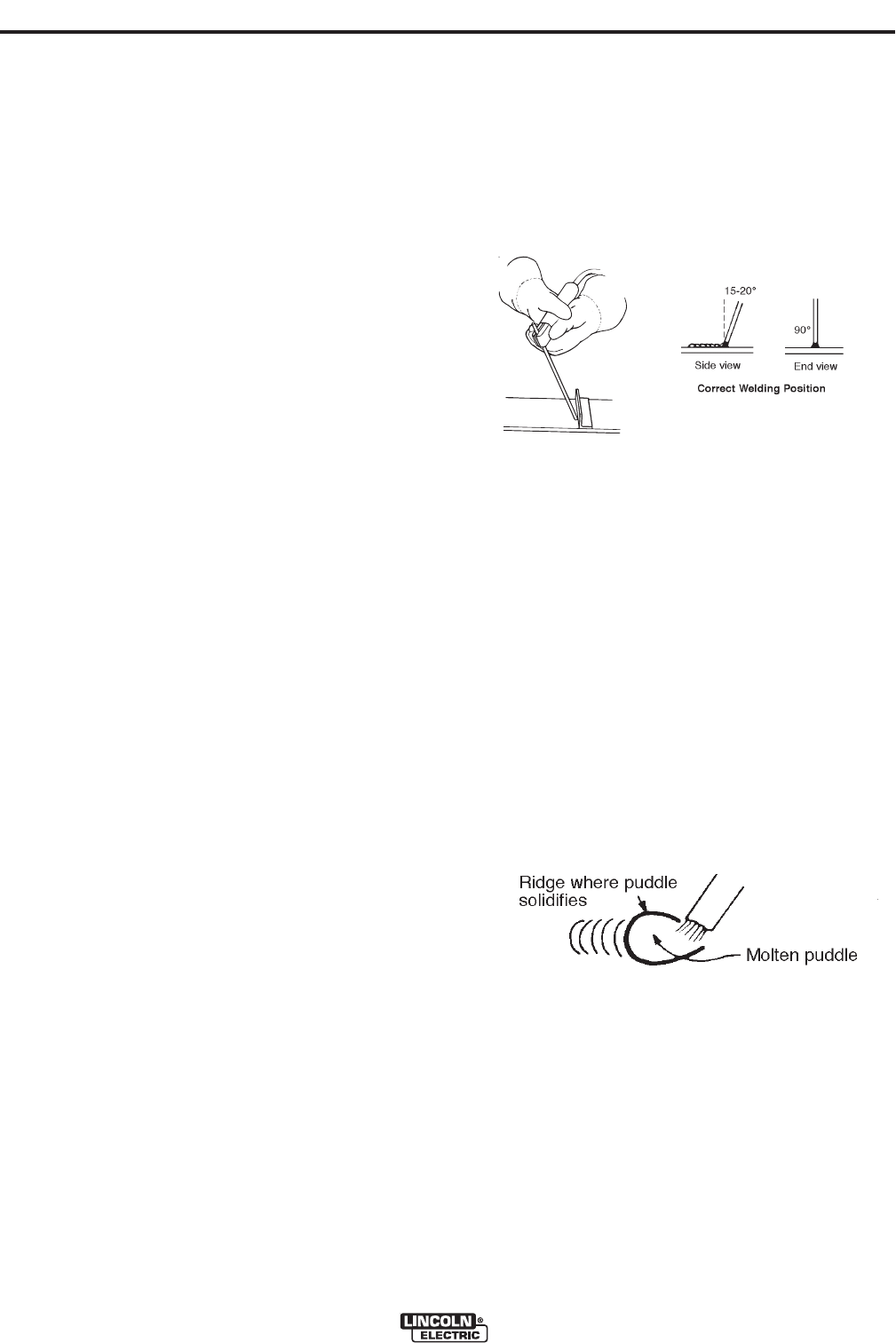
4. Immediately after striking the arc try to maintain a
distance from the workpiece that is equivalent to
the diameter of the electrode used. Maintain this
distance as constantly as possible during the weld.
Whenever possible, weld from left to right (if right-
handed). Hold the electrode at a slight angle as
shown. (See Figure B.5)
'$
5. As the electrode burns off the electrode must be fed
to the work to maintain correct arc length. The easi-
est way to tell whether the arc has the correct
length is by listening to its sound. A nice, short arc
has a distinctive, “crackling” sound, very much like
eggs frying in a pan. The incorrect, long arc has a
hollow, blowing or hissing sound.
6. The important thing to watch while welding is the
puddle of molten metal right behind the arc. Do
NOT watch the arc itself. It is the appearance of the
puddle and the ridge where the molten puddle
solidifies that indicate correct welding speed. The
ridge should be approximately 3/8" (9.5mm) behind
the electrode. (See Figure B.6)
'$
Most beginners tend to weld too fast, resulting in a
thin, uneven, “wormy” looking bead. They are not
watching the molten metal.
"!$& & For general welding it is not necessary
to weave the arc; neither forwards and backwards nor
sideways. Weld along at a steady pace. You will find it
easier. !& When welding on thin plate, you will
find that you will have to increase the welding speed,
whereas when welding on heavy plate, it is necessary
to go more slowly in order to get good penetration.
!"$&!
($&M%
This figure closely resembles what is actually seen
during welding. The “arc stream’’ is seen in the middle
of the figure. This is the electric arc created by the
electric current flowing through the space between the
end of the electrode and the work.
The temperature of this arc is about 6000°F (3315°C),
which is more than enough to melt metal. The arc is
very bright, as well as hot, and cannot be looked at
with the naked eye without risking painful injury. A very
dark lens, specifically designed for arc welding, must
be used with a hand or face shield whenever viewing
the arc. The arc melts the base metal and actually
digs into it, much as water through a nozzle on a gar-
den hose digs into the earth. The molten metal forms
a pool or crater and tends to flow away from the arc.
As it moves away from the arc, it cools and solidifies.
A slag forms on top of the weld to protect it during
cooling.
The function of the covered electrode is much more
than simply to carry current to the arc. The electrode
is composed of a core rod of metal with an extruded
chemical covering. The core rod melts in the arc and
tiny droplets of molten metal shoot across the arc into
the molten pool. The electrode provides additional
filler metal for the joint to fill the groove or gap
between the two pieces of the base metal. The cover-
ing also melts or burns in the arc. It has several func-
tions. It makes the arc steadier, provides a shield of
smoke-like gas around the arc to keep oxygen and
nitrogen in the air away from the molten metal, and
provides a flux for the molten pool. The flux picks up
impurities and forms the protective slag.
)
Insert the bare part of the electrode into the electrode
holder jaws and connect the work clamp to the weld-
ing piece. Make sure to have good electrical contact.
1. Turn the welder on.
2. Lower your welding helmet to protect your face and
eyes.
3. Strike the electrode at the work point on the work-
piece as if striking a match. Do not hit the electrode
on the workpiece, which will damage the stick elec-
trode and make striking an arc difficult. Scratch the
electrode slowly over the metal and you will see
sparks. While scratching, lift the electrode 1/8"
(3.2mm) and the arc will establish.
!& If you stop moving the electrode while scratch-
ing, the electrode will stick.
!& Most beginners try to strike the arc by a fast
jabbing motion down on the plate. Result:
They either stick or their motion is so fast that
they break the arc immediately.



